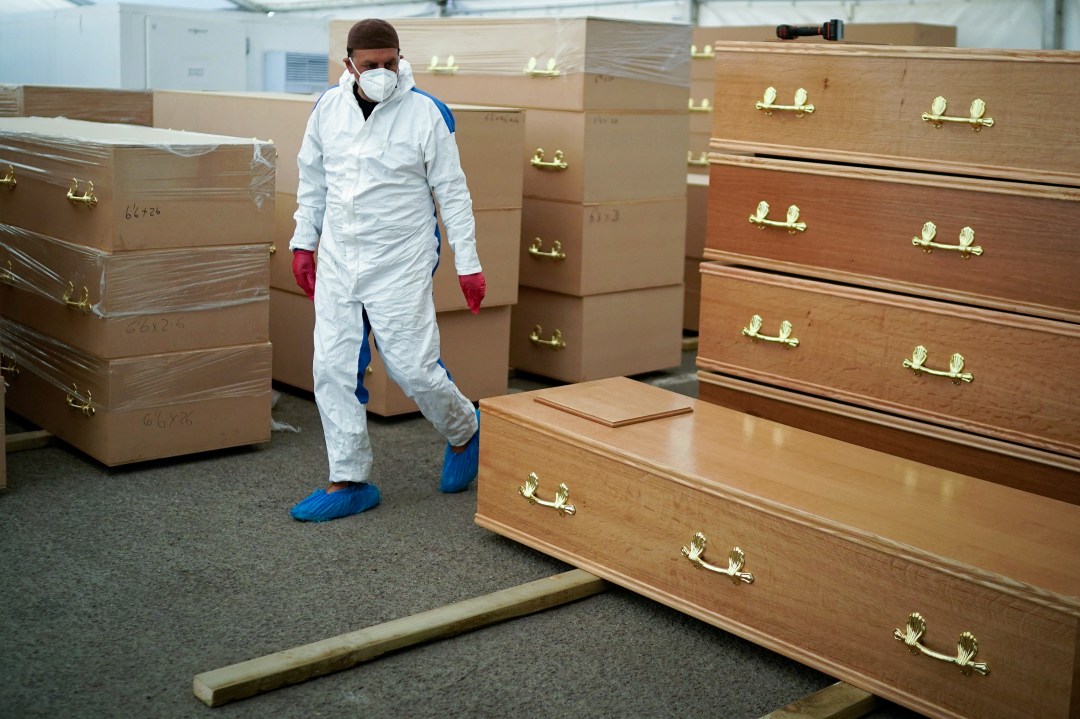This week, the government has published a better measure of Covid-19 deaths by widening it out from hospital deaths to all settings. But what about those who have died without having had a test? Does the ‘improved’ estimate go far enough?
I think the simple answer is no. The mortality data is rising at a rate that suggests many more are dying who have not been tested. But there are ways of estimating and, as the former head of health analysis at the ONS, I have conducted my own study.
As of Wednesday 29 April, my figure is 45,290 deaths linked to Covid-19 in Great Britain. This is far higher than the 26,097 issued by the Government that day. Let me explain how I arrive at my estimate.
Daily and weekly data
The mortality data is rising at a rate that suggests many more are dying who have not been tested
To assess what is happening at any specific time, it is better to use the number of deaths based on when they occurred. But this also poses challenges as there can be time lags when waiting for all occurrences to come in. Every afternoon, the Department of Health publishes updates on deaths related to Covid-19. Remember, these are not necessarily deaths occurring since the previous update but deaths identified over the 24 hours, regardless of when they occurred.
The ONS enters the arena each Tuesday, publishing the number of weekly deaths – something they have done for many years – from right across the country, not just hospitals. Since the Covid-19 outbreak, the publication includes how many deaths involve Covid-19 by examining the death certificate. In recent weeks, this has led to a big increase in Covid deaths by including care home deaths.
How to estimate the total number of deaths related to Covid-19
NHS England and Public Health Wales provide a daily update of the number of patients who have died in hospitals having tested positive for Covid-19 at time of death. These relate to the date of death rather than the day the death was announced. The ONS tells us the total number of deaths related to Covid-19 and the day they occur, so you can deduce how many deaths are missed from just focusing on hospitals.
I have taken data from 13 to 17 April 2020 and adjusted for deaths on those days not yet included using data from previous weeks. I compared this to hospital data and estimate deaths in the community (at the moment) are equivalent to those in hospitals. The assumption for my estimate is that total Covid-19 related deaths are double the daily hospital figures. This is in line with information from the National Records of Scotland issued on 29 April 2020, where deaths in the community were slightly more than double those in hospital for the latest Scottish data.
Direct and indirect Covid deaths
The latest ONS data suggests around 80 to 90 per cent of the extra deaths involve Covid-19. So, what of the remaining excess deaths? This is more complicated as there could be many reasons. For example, deaths among people who had Covid-19 but, for whatever reason, were not tested for it or deaths among people not seeking medical intervention for a condition because of the worry of attending hospital.
On the flip side, there may be fewer deaths for some causes because of the lockdown – fewer road accidents for example. But if you take all causes of death, those above average we can assume may not have occurred without the pandemic – or the associated measures taken by government in response to the pandemic. As Chris Whitty has put it: ‘Deaths from Covid will be a combination of direct deaths from the virus, and also indirect deaths – if, for example, people are nervous about going into hospital.’ We ought to count both.
Adjusting for the factors described, I estimate the total number of deaths in England and Wales related to the Covid-19 pandemic – directly and indirectly – to be around 42,300 as of 29 April. This is the total number of deaths reported by the ONS up to 17 April and those dying in hospital in the period since (adjusted to account for community deaths and excess deaths occurring but not being specifically coded as Covid-19). In Scotland I estimate deaths linked to Covid-19 of 2,980, resulting in total deaths of around 45,280 in Great Britain.
The good news is the hospital data we have so far would suggest we have moved beyond the peak in weekly deaths. But we need to wait until the official estimates to ensure deaths in the community have not gone up at a faster rate to offset this.
Postscript: could low flu deaths have led to high Covid deaths?
Until 13 March, the number of deaths occurring each week in England and Wales were below the five-year average (2015 to 2019), assisted by a less deadly flu strain. So, we headed into the Covid-19 pandemic with just over 14,000 fewer deaths than the five-year average. Flu and Covid target similar types of people. So many of the individuals who survived the winter period would have been susceptible to Covid-19.
Had we experienced the average mortality at the start of this year I expect we may have seen fewer deaths related to Covid-19, as many of those who sadly died of the virus would have died earlier in the year from other causes, such as the flu.







Comments